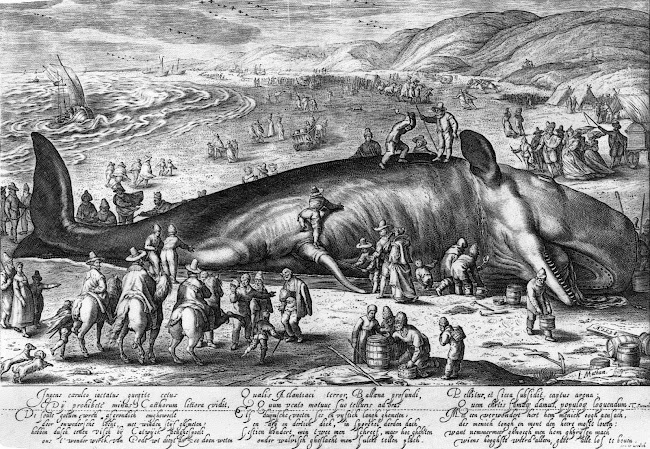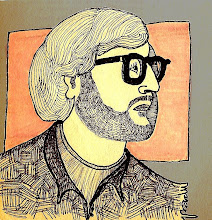 ROAD SONG, originally issued as A&M SP 3012, CTI series, was recorded a month before Wes Montgomery died of a heart attack on June 15, 1968 at age 45 and relesed posthumously. The title song and "Serene," named in honor of his wife, were written by Wes. Other outstanding tracks are "Scarborough Fair" and "Where Have All the Flowers Gone?." Superb guitar playing, as always. Listening to this makes one wonder what more he would have accomplished had he not died so young. It's hard to name all the artists he's influenced. As the liner notes state: "This is the last one. Be glad we have it. If this isn't jazz, then what is? Just because he didn't play the same old standards (pop song from the 30's and 40's) critics gave him hell. I'm an organ player with a love for guitar and I know that the way he play's the octave strums so clean he is the master of this style. The tunes are very touching and short. Some you may know ( Yesterday, Where Have All the Flowers Gone). The originals are clasic (Road Song, Serene). The album is complemented with strings and some tunes are in the baroque style. Don Sebesky did the conducting and arranging. Not to mention Herbie Hancock, Ron Carter, Grady Tate and a host of other great musicians support Wes in the most classy manner. The album is about 30 min. long. but it says a life time in such a short time. By J.B Bent
ROAD SONG, originally issued as A&M SP 3012, CTI series, was recorded a month before Wes Montgomery died of a heart attack on June 15, 1968 at age 45 and relesed posthumously. The title song and "Serene," named in honor of his wife, were written by Wes. Other outstanding tracks are "Scarborough Fair" and "Where Have All the Flowers Gone?." Superb guitar playing, as always. Listening to this makes one wonder what more he would have accomplished had he not died so young. It's hard to name all the artists he's influenced. As the liner notes state: "This is the last one. Be glad we have it. If this isn't jazz, then what is? Just because he didn't play the same old standards (pop song from the 30's and 40's) critics gave him hell. I'm an organ player with a love for guitar and I know that the way he play's the octave strums so clean he is the master of this style. The tunes are very touching and short. Some you may know ( Yesterday, Where Have All the Flowers Gone). The originals are clasic (Road Song, Serene). The album is complemented with strings and some tunes are in the baroque style. Don Sebesky did the conducting and arranging. Not to mention Herbie Hancock, Ron Carter, Grady Tate and a host of other great musicians support Wes in the most classy manner. The album is about 30 min. long. but it says a life time in such a short time. By J.B Bent
martes, 13 de diciembre de 2011
Wes Montgomery
 ROAD SONG, originally issued as A&M SP 3012, CTI series, was recorded a month before Wes Montgomery died of a heart attack on June 15, 1968 at age 45 and relesed posthumously. The title song and "Serene," named in honor of his wife, were written by Wes. Other outstanding tracks are "Scarborough Fair" and "Where Have All the Flowers Gone?." Superb guitar playing, as always. Listening to this makes one wonder what more he would have accomplished had he not died so young. It's hard to name all the artists he's influenced. As the liner notes state: "This is the last one. Be glad we have it. If this isn't jazz, then what is? Just because he didn't play the same old standards (pop song from the 30's and 40's) critics gave him hell. I'm an organ player with a love for guitar and I know that the way he play's the octave strums so clean he is the master of this style. The tunes are very touching and short. Some you may know ( Yesterday, Where Have All the Flowers Gone). The originals are clasic (Road Song, Serene). The album is complemented with strings and some tunes are in the baroque style. Don Sebesky did the conducting and arranging. Not to mention Herbie Hancock, Ron Carter, Grady Tate and a host of other great musicians support Wes in the most classy manner. The album is about 30 min. long. but it says a life time in such a short time. By J.B Bent
ROAD SONG, originally issued as A&M SP 3012, CTI series, was recorded a month before Wes Montgomery died of a heart attack on June 15, 1968 at age 45 and relesed posthumously. The title song and "Serene," named in honor of his wife, were written by Wes. Other outstanding tracks are "Scarborough Fair" and "Where Have All the Flowers Gone?." Superb guitar playing, as always. Listening to this makes one wonder what more he would have accomplished had he not died so young. It's hard to name all the artists he's influenced. As the liner notes state: "This is the last one. Be glad we have it. If this isn't jazz, then what is? Just because he didn't play the same old standards (pop song from the 30's and 40's) critics gave him hell. I'm an organ player with a love for guitar and I know that the way he play's the octave strums so clean he is the master of this style. The tunes are very touching and short. Some you may know ( Yesterday, Where Have All the Flowers Gone). The originals are clasic (Road Song, Serene). The album is complemented with strings and some tunes are in the baroque style. Don Sebesky did the conducting and arranging. Not to mention Herbie Hancock, Ron Carter, Grady Tate and a host of other great musicians support Wes in the most classy manner. The album is about 30 min. long. but it says a life time in such a short time. By J.B Bent
lunes, 12 de diciembre de 2011
Madrugada
 Industrial Silence is the debut album of the Norwegian alternative rock band Madrugada in 1999. The best known track of the album is the ballad Vocal.From the album also exist a limited edition including 2 discs, and a remastered Deluxe edition of the album was released on July 5, 2010. Disc 2 of the remastered Deluxe edition contains 4 previously unrelased demo recordings, and also has tracks from all their early EPs. The remastering was done by Greg Calbi at Sterling Sound in New York.Madrugada was a Norwegian rock band formed in the town of Stokmarknes 1992. The band members included Frode Jacobsen (bass), Sivert Høyem (vocals) and Robert Burås (guitar). After the death of Burås on July 12, 2007 Høyem and Jacobsen decided to finish recording their latest album. The album, entitled Madrugada, was released on January 21, 2008. After the release of the album the band announced they would split after one last tour. They performed their last ever concert on November 15, 2008 at Oslo Spektrum in Oslo-Norway.Industrial Silence is unusually strong and even for a debut album. This, of course, has to do with the fact that they already had been playing together for six years before its release. It kicks off with the majestic "Vocal," with its dense and thick guitar sound and singer Sivert Høyem's distinctive crooning on top of it all. What's really impressive on this album, besides the quality of the songs, is guitarist Robert Burås' creative and versatile playing. From Jim´s World of Music.
Industrial Silence is the debut album of the Norwegian alternative rock band Madrugada in 1999. The best known track of the album is the ballad Vocal.From the album also exist a limited edition including 2 discs, and a remastered Deluxe edition of the album was released on July 5, 2010. Disc 2 of the remastered Deluxe edition contains 4 previously unrelased demo recordings, and also has tracks from all their early EPs. The remastering was done by Greg Calbi at Sterling Sound in New York.Madrugada was a Norwegian rock band formed in the town of Stokmarknes 1992. The band members included Frode Jacobsen (bass), Sivert Høyem (vocals) and Robert Burås (guitar). After the death of Burås on July 12, 2007 Høyem and Jacobsen decided to finish recording their latest album. The album, entitled Madrugada, was released on January 21, 2008. After the release of the album the band announced they would split after one last tour. They performed their last ever concert on November 15, 2008 at Oslo Spektrum in Oslo-Norway.Industrial Silence is unusually strong and even for a debut album. This, of course, has to do with the fact that they already had been playing together for six years before its release. It kicks off with the majestic "Vocal," with its dense and thick guitar sound and singer Sivert Høyem's distinctive crooning on top of it all. What's really impressive on this album, besides the quality of the songs, is guitarist Robert Burås' creative and versatile playing. From Jim´s World of Music.
sábado, 10 de diciembre de 2011
Nils Petter Molvær
 Molvaer's new album "Baboon Moon" marks the self-assured new start of a musician who has already travelled a long way. He began his career in the bands of Jon Christensen and Arild Andersen, but gradually broke out more and more beyond the confines of jazz, starting with his 1997 album "Khmer". His musical journey took him through a wide variety of styles, and he tried out different degrees of abstraction along the way. He experimented together with musicians like Bill Laswell, Sidsel Endresen and Eivind Aarset, and surrounded himself with DJ's and VJ's, but he also worked on his own. His language of expression remained vivid throughout. On his last album, "Hamada", he switched to and fro between very harmonious and extremely brutal passages, while on "Baboon Moon" these two opposite poles blend into a unified whole again.
Molvaer's new album "Baboon Moon" marks the self-assured new start of a musician who has already travelled a long way. He began his career in the bands of Jon Christensen and Arild Andersen, but gradually broke out more and more beyond the confines of jazz, starting with his 1997 album "Khmer". His musical journey took him through a wide variety of styles, and he tried out different degrees of abstraction along the way. He experimented together with musicians like Bill Laswell, Sidsel Endresen and Eivind Aarset, and surrounded himself with DJ's and VJ's, but he also worked on his own. His language of expression remained vivid throughout. On his last album, "Hamada", he switched to and fro between very harmonious and extremely brutal passages, while on "Baboon Moon" these two opposite poles blend into a unified whole again.Molvaer's new album "Baboon Moon" marks the self-assured new start of a musician who has already travelled a long way. He began his career in the bands of Jon Christensen and Arild Andersen, but gradually broke out more and more beyond the confines of jazz, starting with his 1997 album "Khmer". His musical journey took him through a wide variety of styles, and he tried out different degrees of abstraction along the way. He experimented together with musicians like Bill Laswell, Sidsel Endresen and Eivind Aarset, and surrounded himself with DJ's and VJ's, but he also worked on his own. His language of expression remained vivid throughout. On his last album, "Hamada", he switched to and fro between very harmonious and extremely brutal passages, while on "Baboon Moon" these two opposite poles blend into a unified whole again.In order to arrive at this point, he formed a new band. His two fellow players on "Baboon Moon" have come to jazz 'through the back door', as it were. Stian Westerhus is one of Europe's most innovative, and in the meantime most sought-after guitarists. A former member of the post-rock band Jaga Jazzist, he runs the industrial-improv duo Monolithic together with Motorpsycho drummer Kenneth Kapstad. For Westerhus, the electric guitar is not just an instrument: it's a whole orchestra, a creative museum of physical and spiritual possibilities for producing electronic sounds. He manipulates his instrument with every conceivable material and effect, and even produces indefinable sounds by shouting into the strings. Erland Dahlen has played his way into the hearts of alternative-rock fans as drummer of the Norwegian psychoblues band Madrugada. He contributed this deep and earthy but also progressive blues feeling to Eivind Aarset's Sonic Codex Orchestra first of all, and now he brings it to Molvaer's trio.From nilspettermolvaer.info
Suscribirse a:
Entradas (Atom)















